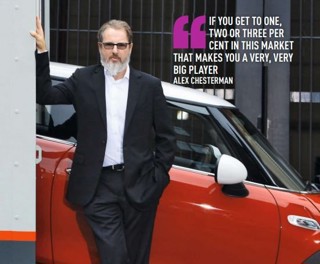But if you know the likely pitfalls and, importantly, the answers planners want to hear, chances are you’re in for a much easier ride.
Planners traditionally restrict retail developments close to town centres. Also, if a site is outside the developed town centre boundary, especially if that site was previously occupied for employment use, such as a factory, then planners will resist.
“The engineering businesses that would typically run out of these sites are experiencing a steady decline in the number of staff needed to run them,” says Alfred Bartlett, partner and head of national roadside department Donaldsons. “Point out that once you factor-in all the employees in a modern dealership, it will actually employ more people than a traditional industrial property.”
If planners argue that is a different type of employment, Bartlett argues: “Workshop positions attract a similar skills set to those found in an industrial property. Of course, they are not a direct swap, but I think the planners see it as generally replacing blue-collar workers.”
Another issue that often arises, is from the incorrect perception among planners that a dealership will generate lots of additional traffic. Bartlett says: “We point out that, apart from the delivery of vehicles, there is no extra traffic. In fact, there are generally only around five customers present at any time.”
Despite the hold manufacturers have over corporate identity standards, even they must be open to compromise when it comes to planning permission.
Because prime dealership sites are on arterial roads (known by planners as Gateways) and are highly visible, they must be aesthetically pleasing. Two examples of dealerships having to modify their showroom designs in order to satisfy the planners can be found in Mercedes-Benz, Lawley Middleway, and Rydale BMW, both in Birmingham.
Bartlett says: “Because of its proximity to a crossroads, Lawley Middleway was forced to reposition the traditional ‘rising dome’ feature, and also alter the aspect of the building itself to improve the dynamics in relation to the crossroads.”
As involved as this might sound, Bartlett says that only two meetings were required between Donaldsons and the planners prior to entering the application. Each time Donaldsons liaised with Mercedes-Benz, and the compromise was reached.
Rydale’s exterior also differs from standard BMW corporate identity, as a result of satisfying planner’s requirements for a ‘visually pleasing’ frontage.
Alison Tero, associate director, CB Richard Ellis (CBRE), says there are three key areas that determine the strength of a case.
Firstly, and most vital, is job creation. The dealership needs to demonstrate their jobs count; they have to be quality positions.
Secondly, planners like to see high-quality design. Tero says: “If a dealership can provide a landmark building or high-quality frontage, something that another employer might not be able to deliver, planners see this favourably. There are also environmental pluses from this, through things such as the associated landscaping.”
Finally, because dealerships are sui generis, a Latin term meaning they do not fit neatly into any of the Government’s use classes, if it can create an ‘active frontage’, this is looked upon kindly. Dealerships wanting a residential location face different obstacles because there is potential conflict between the business and residents. “It’s a balancing act,” says Tero.

















Login to comment
Comments
No comments have been made yet.